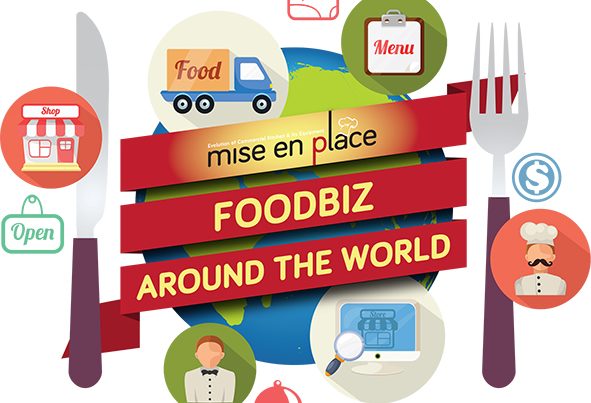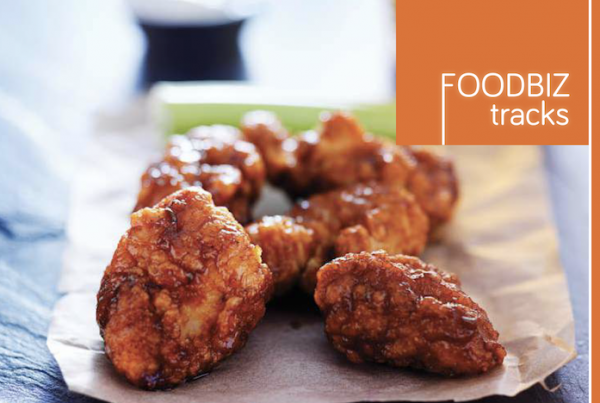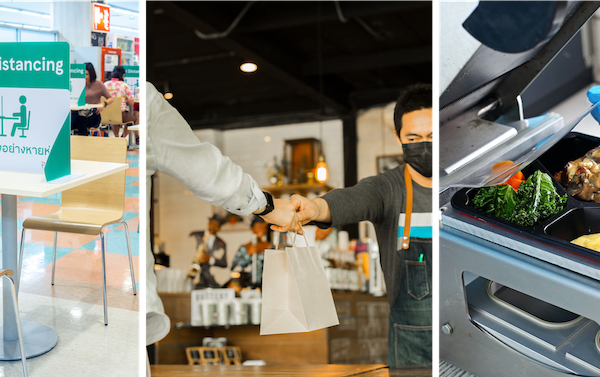
A small island nation in South East Asia, Singapore is easily the most recognised country from this region. A country that boast solid financial status with modern buildings, transportation and facilities, it is normally chosen as the first stop for investors coming into the region. A diverse local community that is well travelled, Singapore also has a big community of working international expatriates and professionals which makes acceptance of cuisines from abroad easy. Many brands pick Singapore as their stepping stone into South East Asia, though in recent years, its high costs and manpower limitation have turned some brands to consider its neighbours instead.
If you’re considering entering Singapore, it is our first stop in FOODBIZ Landscapewhere we look at the factors that may be helpful for your consideration.
FACTS:
Land size: 719.1 sq.km
Population: 5.54 million
Population density: 7,767 per sq. km
Average household size: 3.43 (2014)
Data refer to resident households
(i.e. households headed by a Singapore citizen or permanent resident)
Currency : Singapore Dollar
(USD 1.00 is equivalent to SGD 1.43)
*Information correct at press time
QUICK STATS – F & B INDUSTRY
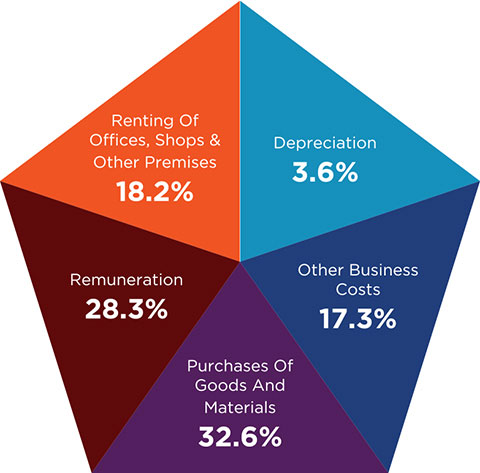
Business costs for the F & B Business, 2014
Key indicators for overall Food & beverage services Industry (2009- 2014)
Number of establishments
In 2014, there were about 6,860 establishments in the food & beverage (F&B) services industry. Operating receipts in the F&B services industry rose 4.0% to $8,746 million in 2014. Operating surplus decreased 1.0% to $553 million over the same period. Value generated by the F&B services industry amounted to $3,055 million in 2014, representing an increase of 3.1% compared to 2013.
Business costs for the F & B Business
Purchases of goods & materials continued to be the top business cost incurred by the overall F&B services industry in 2014, representing 32.6% of the industry’s total operating expenditure for the year. This was followed by remuneration (28.3%), rental expenditure (18.2%) and depreciation (3.6%). Among the various F&B services segments, purchases of goods & materials and remuneration were the top two expenditure items in 2014, accounting for 54% to 64% of the respective segment’s total operating expenditure for the year. Rental expenditure was the next largest business cost item for all segments except food caterers.
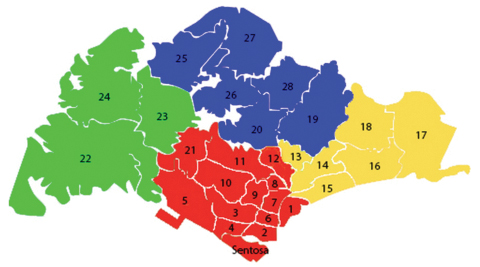
MAIN AREAS of interest of Singapore
RED –Singapore’s main Central Business District. Within the same area lies its two casinos ; Marina Bay Sands and Resort World Sentosa Genting with Universal Studios are popular tourist destinations. The most popular shopping street, Orchard Road is also in the same area. There is a high concentration of eateries from hawker centres, food courts to hotels and exclusive restaurants. However, it doesn’t mean that areas outside of the central districts aren’t popular. Singapore has a spread of malls all around the island, both east and west as many Singaporeans stay outside of its main city limits in HDB (Housing Development Board) flats. Within the surrounding of the flats are many hawker centres or food courts for convenience of residents. Although we were unable to gather precise information on Singaporeans’ frequency of dining out, we do imagine that it is of considerably high volume as many work long hours or commute a lot.
World renowned chefs with restaurants in Singapore:
Joël Robuchon •Tetsuya Wakuda •Wolfgang Puck •Jamie Oliver Daniel Boulud •Jason Atherton •Mario Batali •Cat Cora •Luke Mangan
FOOD EVENTS in Singapore:
World Gourmet Summit – An annual epicurean festival that showcases the intricate craftsmanship of prestigious chefs; it is also an exposition of the internationally acclaimed vintners.
SAVOUR Singapore – an annual food festival in Singapore where you can indulge and have a tonne of fun at the same time.
Singapore Food Festival (SFF) – an annual celebration of Singapore’s best local food and culinary talents with events offering a variety of interesting and immersive experiences.
| LOCATION | PRICE PER SQ.FT |
| Popular areas such as – Clarke Quay, Holland Village, Ann Siang Hill |
SGD 18.00 to SGD 20.00 |
| Shopping Malls | SGD 15.00 to SGD 20.00. However, there are malls who also charge based on % of the total sales as rental, whichever higher. |
Standard Tenure period: 2 year
Note: In the event of early termination, the current tenant is required to find a replacement to take up the rest of the lease with approval from the landlord.
Lease Agreement
There is a Fair tenancy Framework in place.
The Framework aims to help tenants and landlords understand the key terms and conditions of the lease agreement, the respective roles and responsibilities and the implications of prevalent industry lease clauses. It also serves as a checklist for negotiation between tenants and landlords.
The Framework also highlights to landlords the concerns and perspectives of tenants. With a common understanding, it will encourage both parties to conduct open, transparent and fair negotiations.
http://www.sbf.org.sg/businessadvocacy/fair-tenancy-framework
Additional clause in an agreement?
“For F & B normally there is a clause subject to approval from the authorities. There are many approvals needed for F & B like URA for approval of space to be used as F&B. There are classification in the commercial shop which can be used. If the shop is F & B approved it’s ok but if not they need to submit for approval. NEA is responsible to approve renovations done to the place.”
Mr Keith Tan, Senior Marketing Director – ERA Realty Network Pte Ltd
Our thanks to Mr Keith Tan for the information. He can be contacted at
Mobile: (65) 97501055or
Email ID: keith5122@gmail.com
CEA No.:R003793E
FOOD PRICES
We asked a family of 4 – 2 adults, 1 child and 1 toddler to explore the streets of Singapore to give us a rough eating out cost around the city; encompassing 4 foodservice segments:
• Hawker centres -large open air complex with stalls selling a variety of inexpensive food typically found within housing areas, HDB flats, industrial or commercial areas.
• Food courts -found in malls around the city, it is a popular
destination for working professionals in the city areas with airconditioning and also offering a good variety of food.
• Restaurants, café -independent set ups in the city, either in malls or in shoplots.
• Hotels / fine dining establishments -the top tier diningChicken Rice:a signature meal of rice with roast or boiled chicken, cucumber and a side of soup. Prices can vary in terms of choice of chicken parts and also add-ons

Mee Pok:a dish of noodle tossed in sauce with meat and vegetables on top.

Pasta:The unmistakable Italian dish is frequently served with tomato sauce, herbs like oregano and basil), olive oil, meat, or vegetables.

Chicken Chop:A piece of grilled boneless chicken meat served with fries and vegetables alongside a sauce. The secret to a good chicken chop lies in the seasonings and binding agents.

Sandwich:taking a roast chicken and tuna as the most common fillings for comparison, it is a quick and substantial meal with bread and vegetables completing it.

Coffee


Average costfor a person to eat out at the following places:

All prices in Singapore are subject to a 7% GST. In some establishments – a 10% service charge is added on as well.
Our thanks to Patrick & Charlene Yeoh with Chloe & little Jude for helping us.
STARTING UP IN SINGAPORE:
All businesses must be registered with the Accounting & Corporate Regulatory Authority (ACRA). This includes any individual, firm or corporation that carries out business for a foreign company.
Licences and permits are required when you:
• Import ingredients and equipment
• Operate central kitchens & food processing establishments
• Operate F&B outlets like hawker stalls, restaurants, cafes, and mobile food wagons, among others
• Renovate existing premises
• Provide entertainment in your F&B outlet
• Serve alcohol to customers
• Sell liquor and tobacco products
• Provide outdoor dining areas
• Operate establishments such as food factories or premises that could pose a risk to health and safety
• Use materials or apparatus in your manufacturing process that are radioactive or include hazardous substances
MANPOWER MATTERS
Workers
Like any F&B industry in a growing country, manpower can be scarce when the country’s citizens are made up of highly educated individuals. Therefore many businesses rely on foreign workers to handle the menial work.
Work permit for foreigners:
Licenses for food establishments are issued by the National Environment Agency (NEA). Only operators with foodshop licenses issued by NEA are allowed to employ foreign workers. The NEA license must bear the name of the company, sole proprietor or partner. For private limited and limited liability partnership (LLP) companies, licenses bearing the name of an individual are not accepted.
Quota & Levy
The number of workers holding a Work Permit you can hire is limited by a quota (or dependency ratio ceiling) and subject to a levy. The levy rates are tiered so that those who hire close to the maximum quota will pay a higher levy.
Additional requirement for hotel, retail and F&B industries:
• To qualify as skilled workers, non-Malaysian Work Permit holders working in the hotel retail and F&B industries must also obtain level 4 of the Workplace Literacy (WPL) listening and speaking assessments administered by WDA. The WDA will then inform the NEA of the results. You do not need to apply to MOM for conversion to skilled worker levy.Those who qualify under MBF are not required to go through additional WPL assessments.
More information is available at
www.mom.gov.sg
SUPPORTING BODIES
Restaurant Association of Singapore (RAS)Established in 1980, it was formerly known as the Singapore Hotel and Restaurant Association, catering to the distinctive needs of restaurant and hotel operators then. As tourism flourished, it prompted restaurants and hotels to create separate representative bodies to better focus and service the needs of the respective individual sectors. Starting with only 20 members, RAS has since grown its membership base to more than 300 members, accounting for over 2,200 restaurant outlets. It also works closely with various Government bodies and F&B related associations overseas to develop and propel the local F&B industry. We spoke to RAS and gathered some information on some programmes available for aspiring or current operators.
Q: We understand that there is a government grant for operators choosing the automation route. But if service still requires a human touch, what can operators do?
Yes, there are several government grants that F&B operators can tap on for different kinds of initiatives and projects that they want to embark on, not only automation. For example, RAS is administering the 5S programme, which is able to drive productivity improvement via operational efficiency and space utilisation and companies are able to tap on government grants for this programme.
On the point of human touch for service, automation should help ease up the servers’ workload by taking away processes that can be replaced by technology. In this way, the servers can then focus even more on providing good quality service directly to the patrons.
Q: Anything to share with our readers who are considering entering Singapore? What is a good way I can test the market if I am coming in with a new menu?
New entrants into the Singapore F&B scene have increased in recent years with interesting concepts. However, the extremely competitive market resulted in many being unable to survive the first 5 or even 3 years. Therefore, RAS has worked with SPRING Singapore to launch an online community www.rasmentorshipforum.com . This forum consists of a discussion board for users to ask questions and find out industry news and articles.
Q: According to reports, there is a slight decline in F & B spending in 2015, any comments on expectations for 2016?
With uncertainty looming in 2016’s economy, we expect that consumers will generally become more cautious in terms of spending. However, strong and interesting F&B concepts can certainly still stand out from competition and capture consumers’ spending.
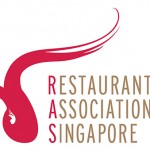
Ms Lim Rui Shan
Executive Director
www.ras.org.sg







